Units and Dimensions Math Worksheets
Adding and Subtracting Centimeters and Millimeters
Grades: 4th Grade, 5th Grade
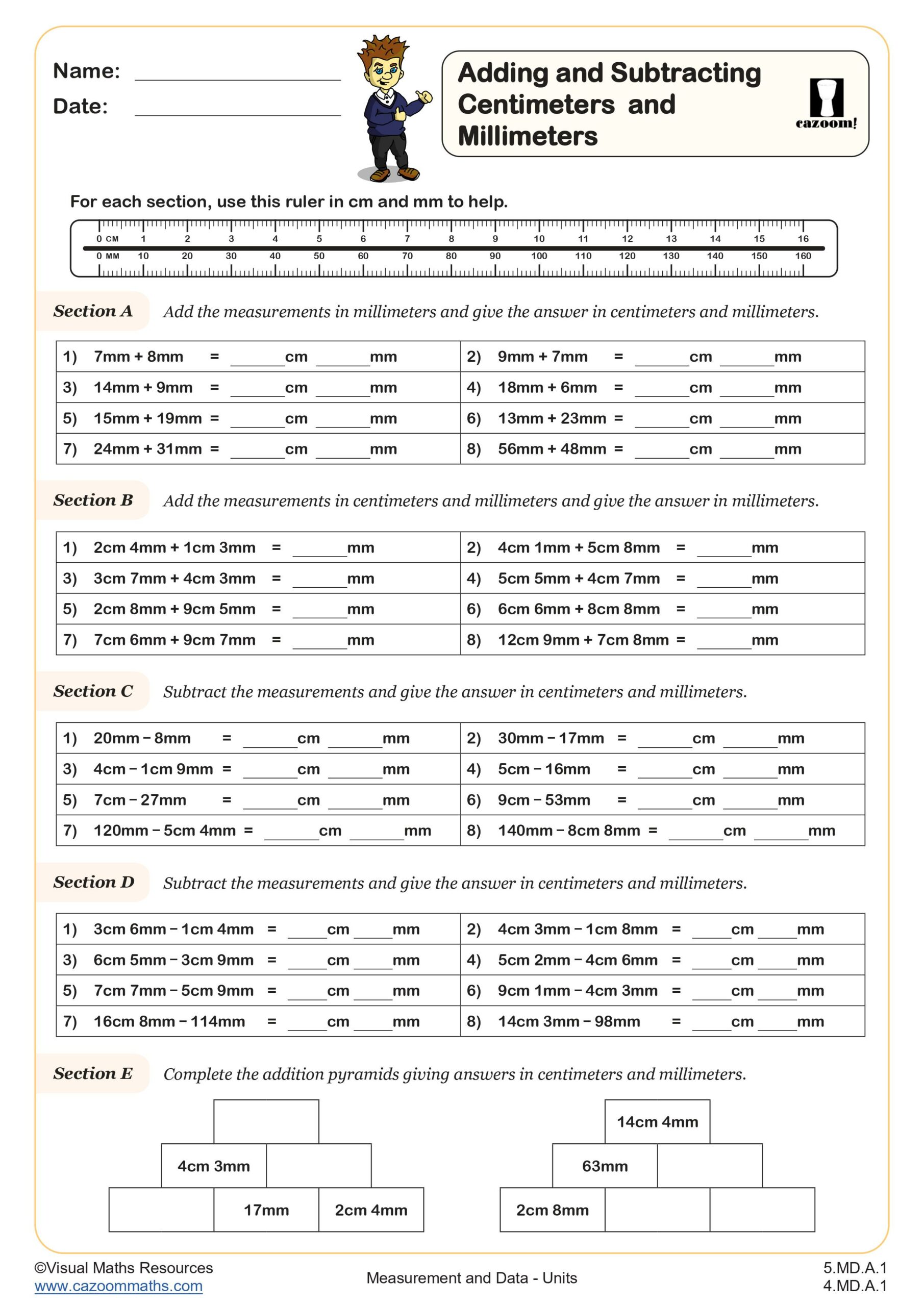
Converting Lengths - Centimeters and Millimeters
Grades: 4th Grade, 5th Grade
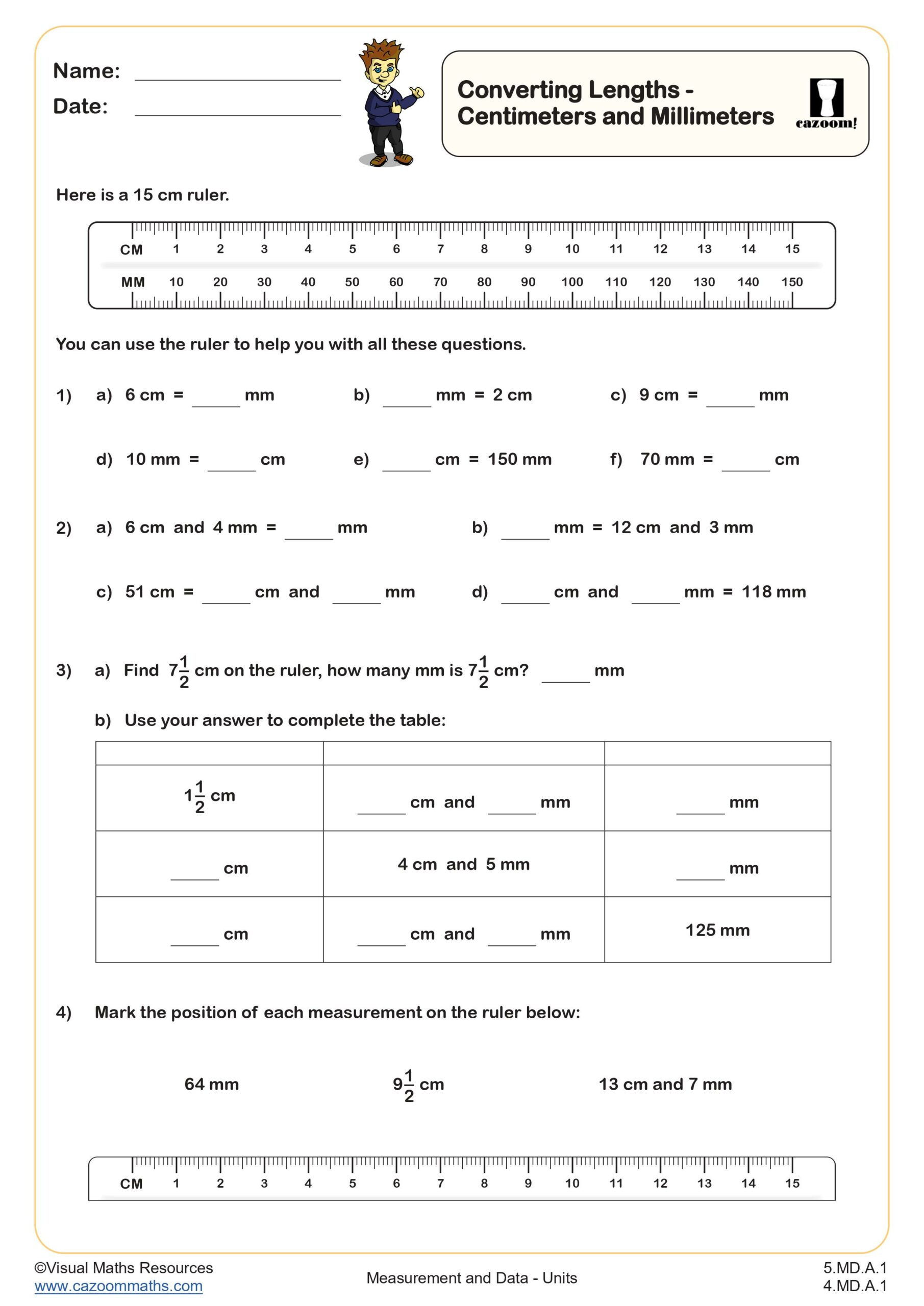
Converting Lengths - Meters and Centimeters
Grades: 4th Grade, 5th Grade
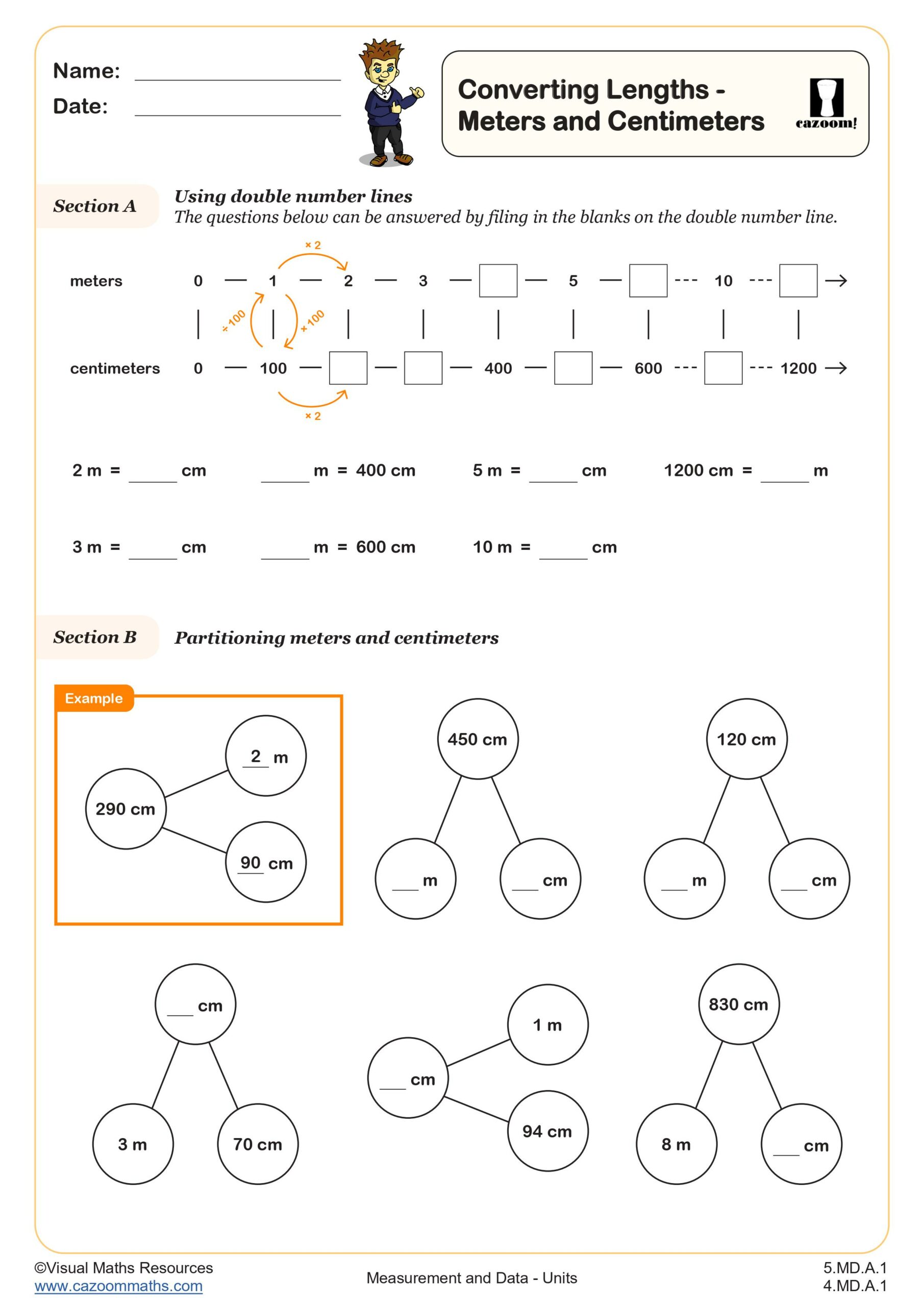
Making 1 kg
Grades: 4th Grade, 5th Grade
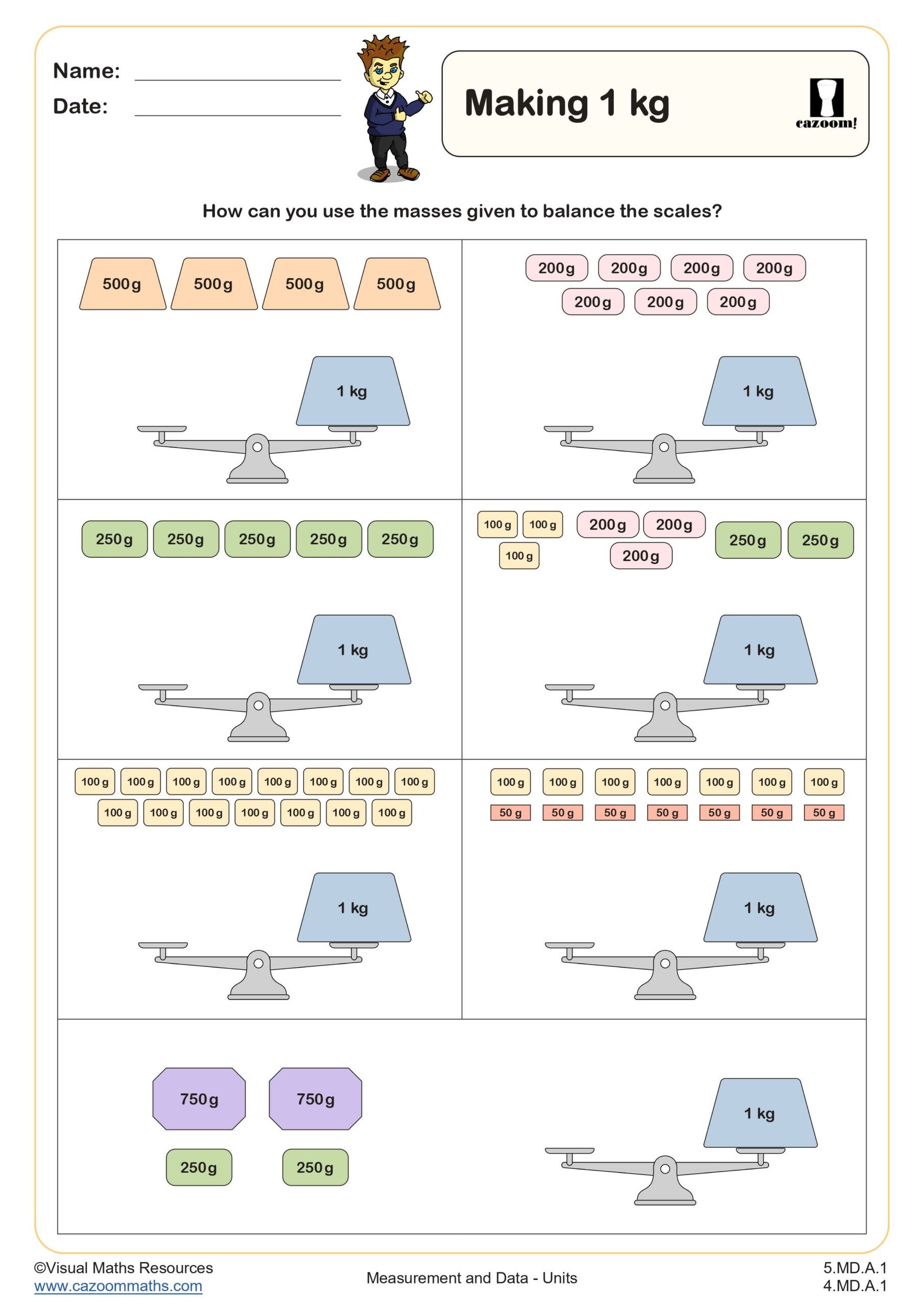
Making 1 l
Grades: 4th Grade, 5th Grade
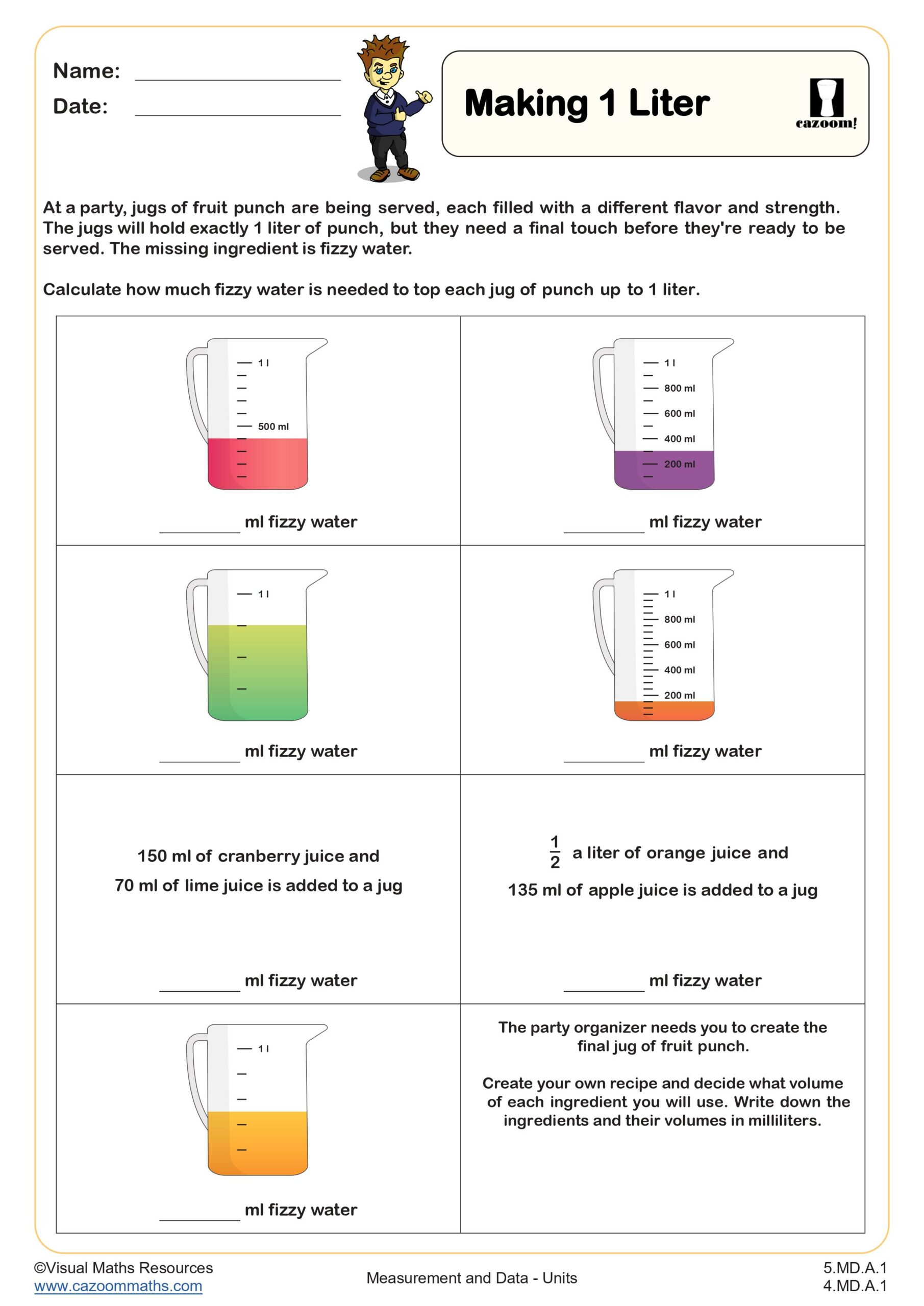
Adding and Subtracting Liters and Milliliters
Grades: 5th Grade, 7th Grade
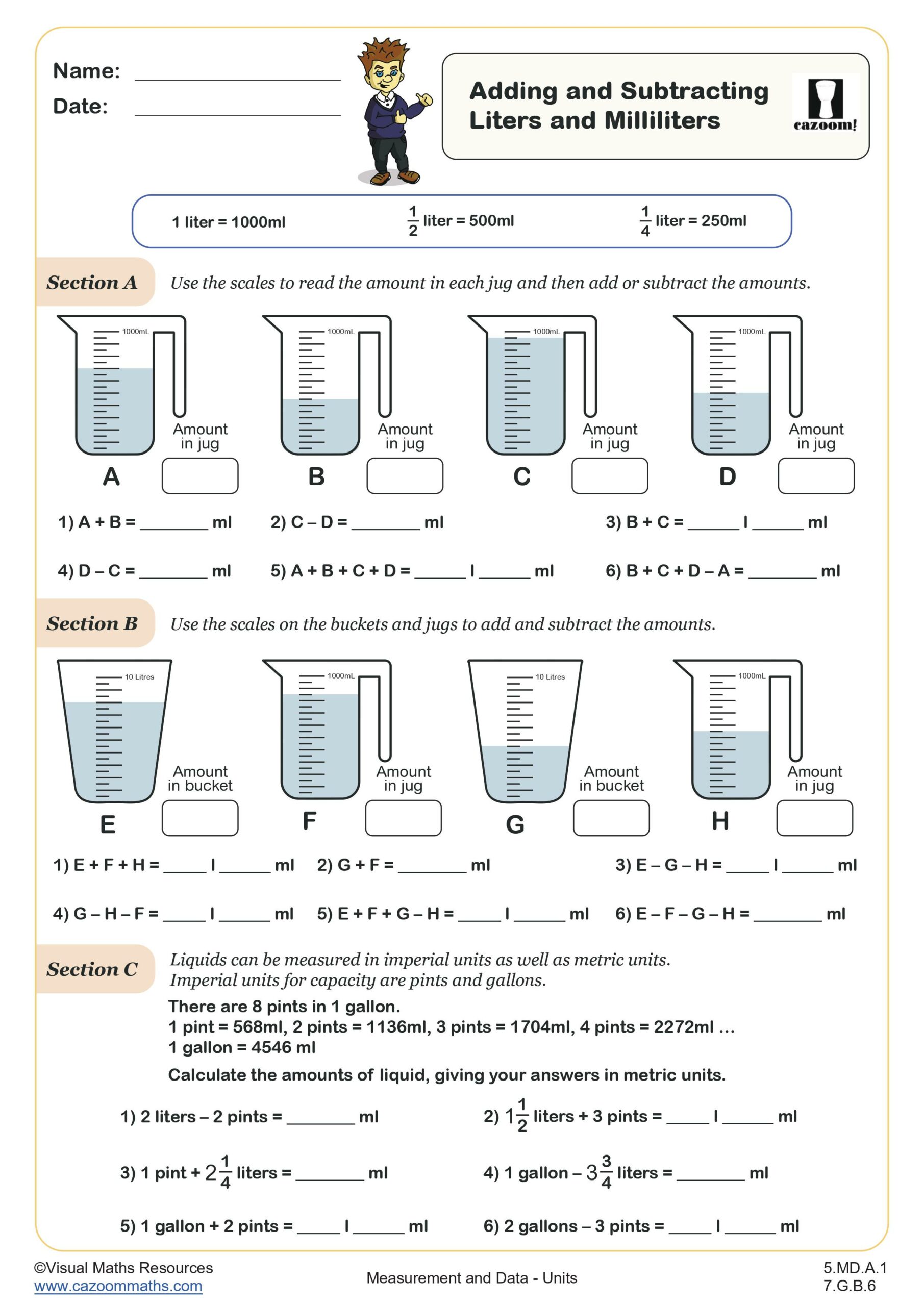
Adding and Subtracting Meters and Centimeters
Grades: 5th Grade
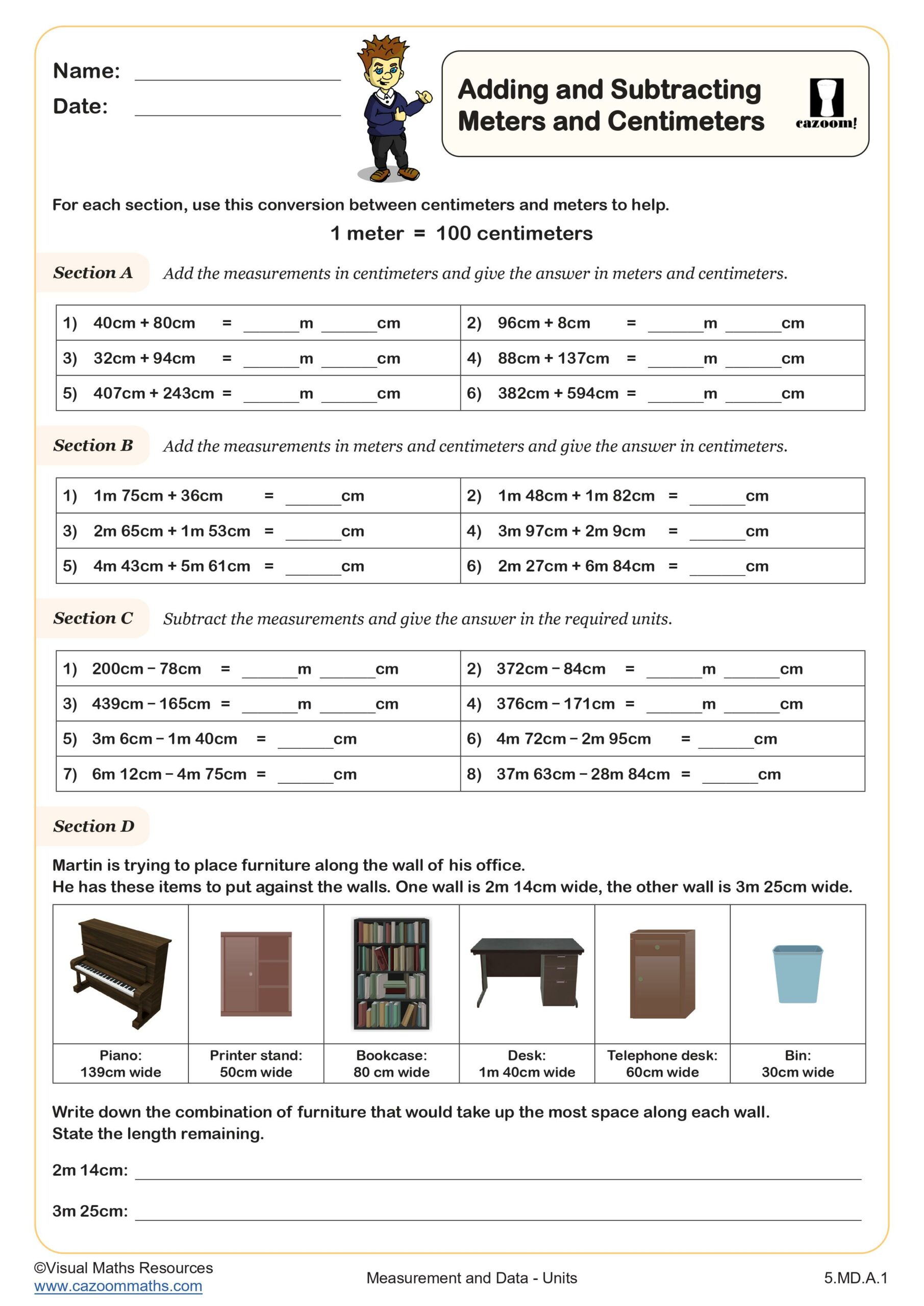
Measure Mass - in Grams
Grades: 5th Grade, 6th Grade
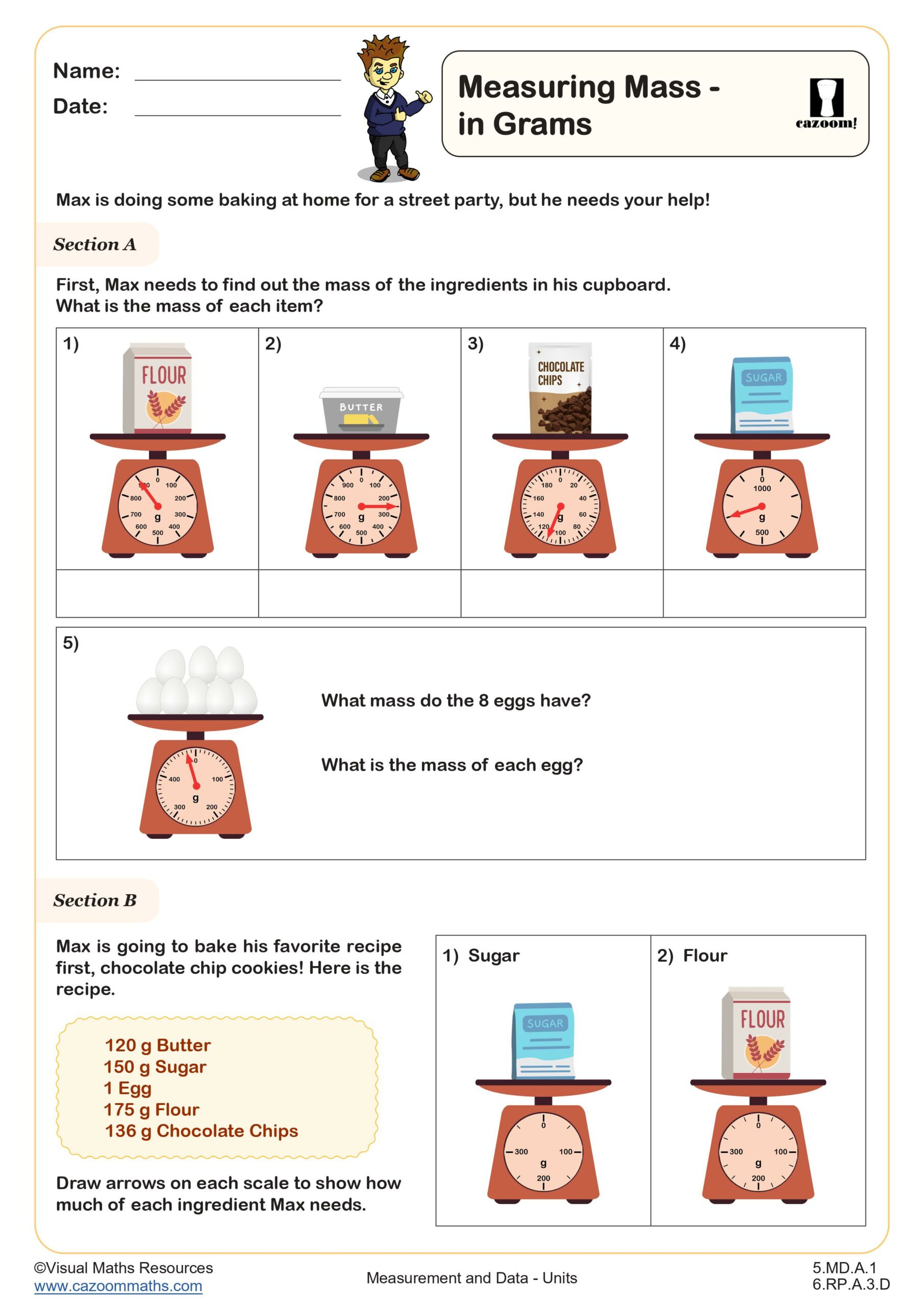
Nets and Faces - Using Cubes (A)
Grades: 6th Grade
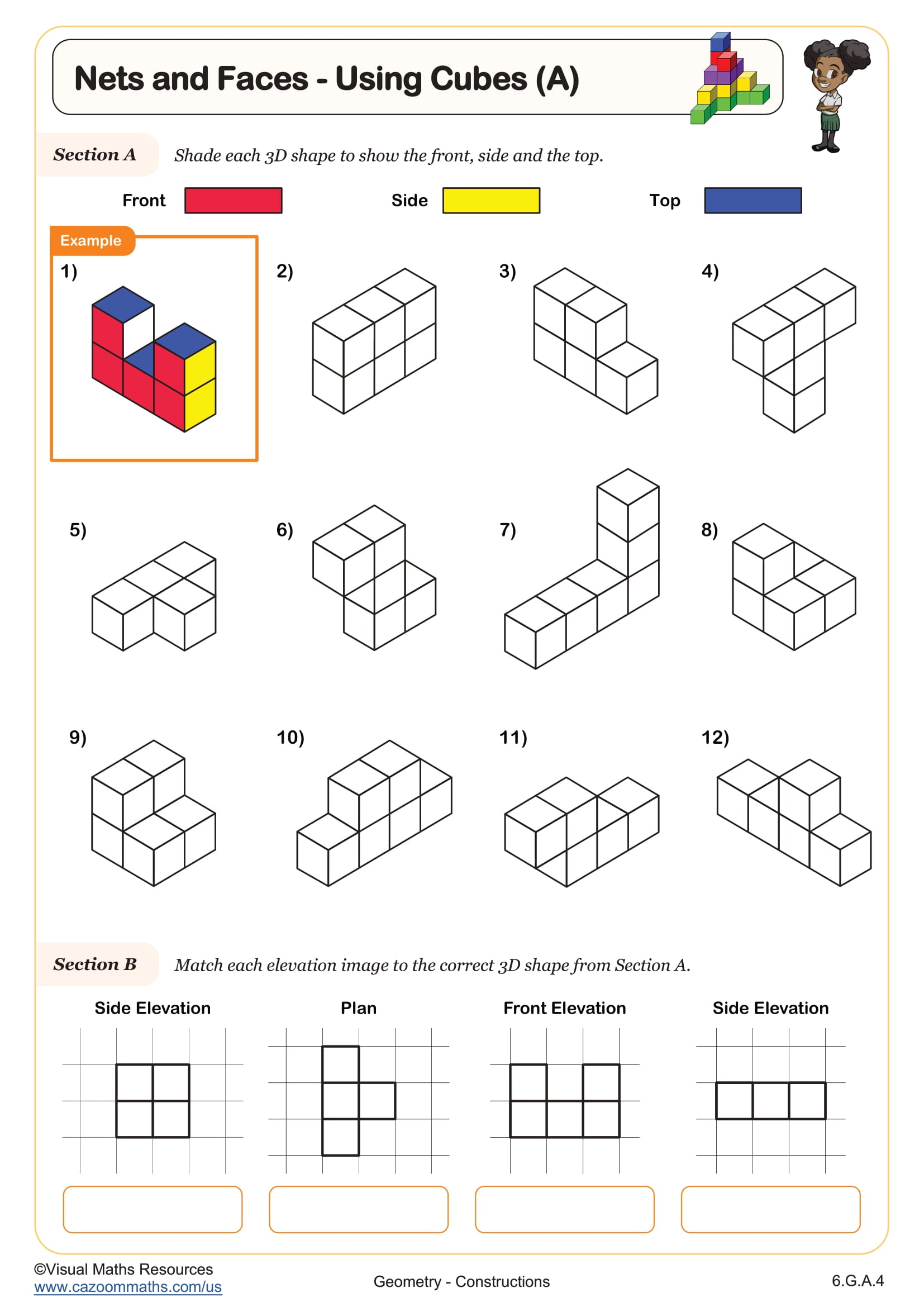
Nets and Faces - Using Cubes (B)
Grades: 6th Grade
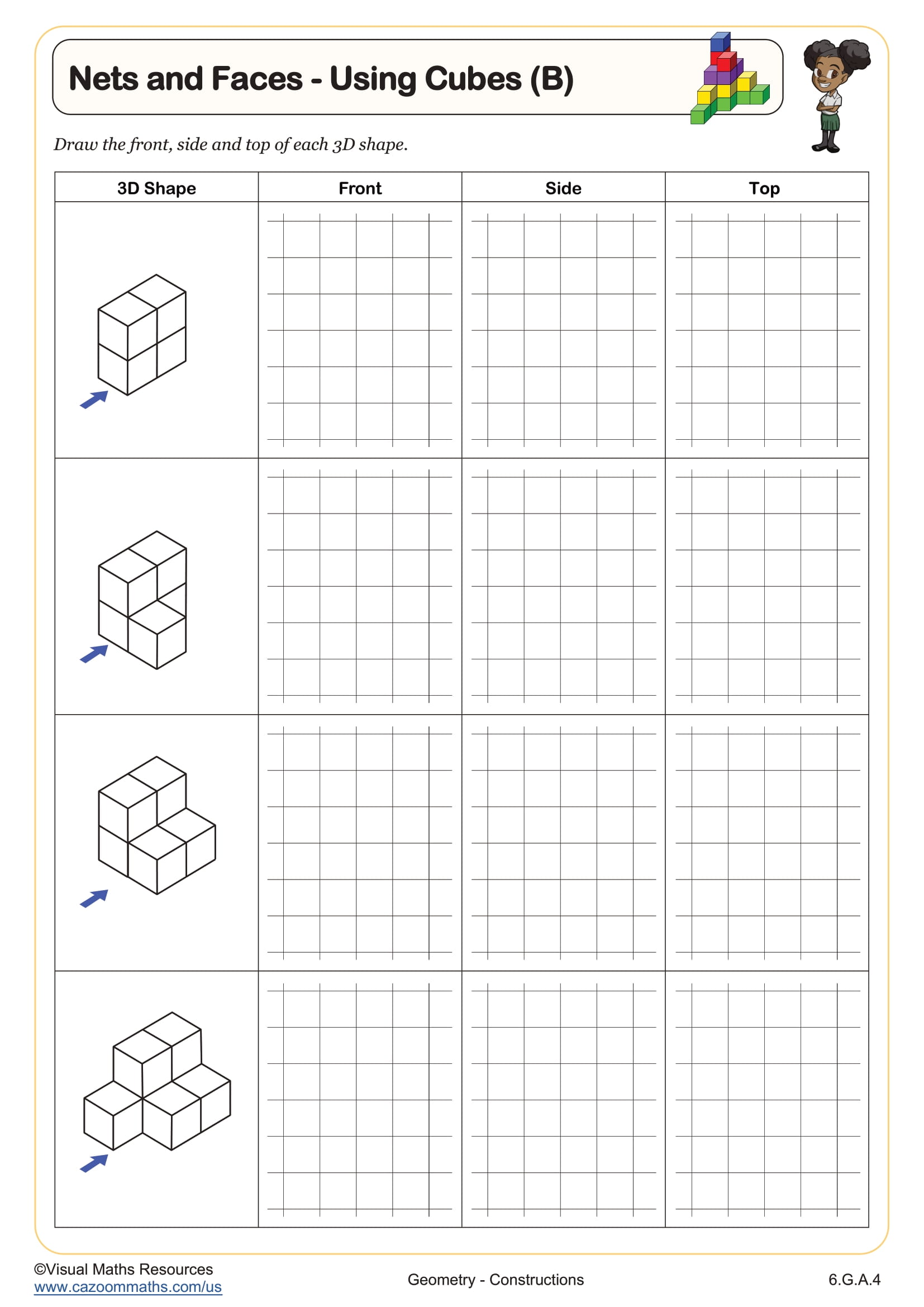
Nets and Faces - Using Cubes (C)
Grades: 6th Grade
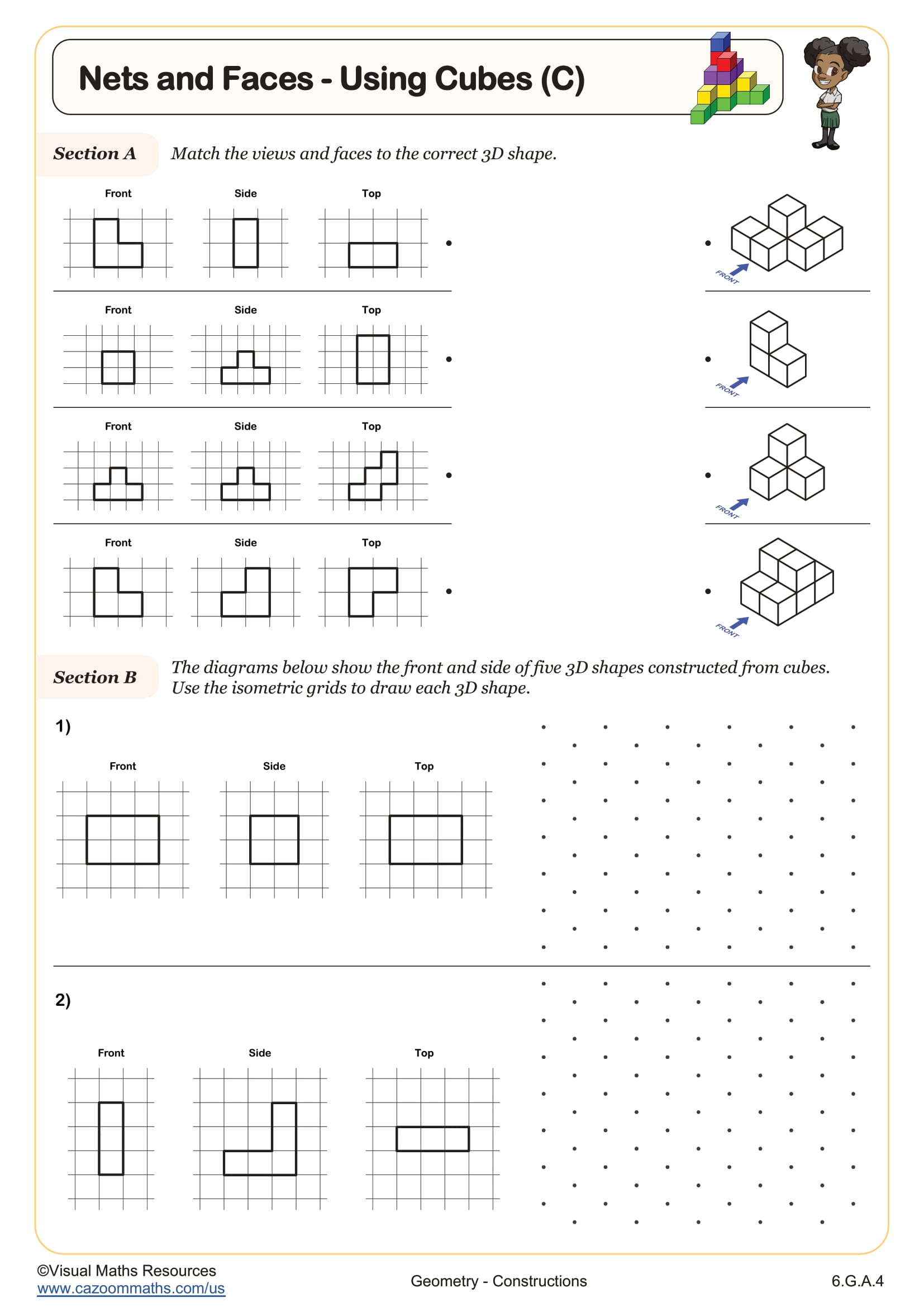
Our Solar System- Discovering Size
Grades: 7th Grade, Geometry, IM 2
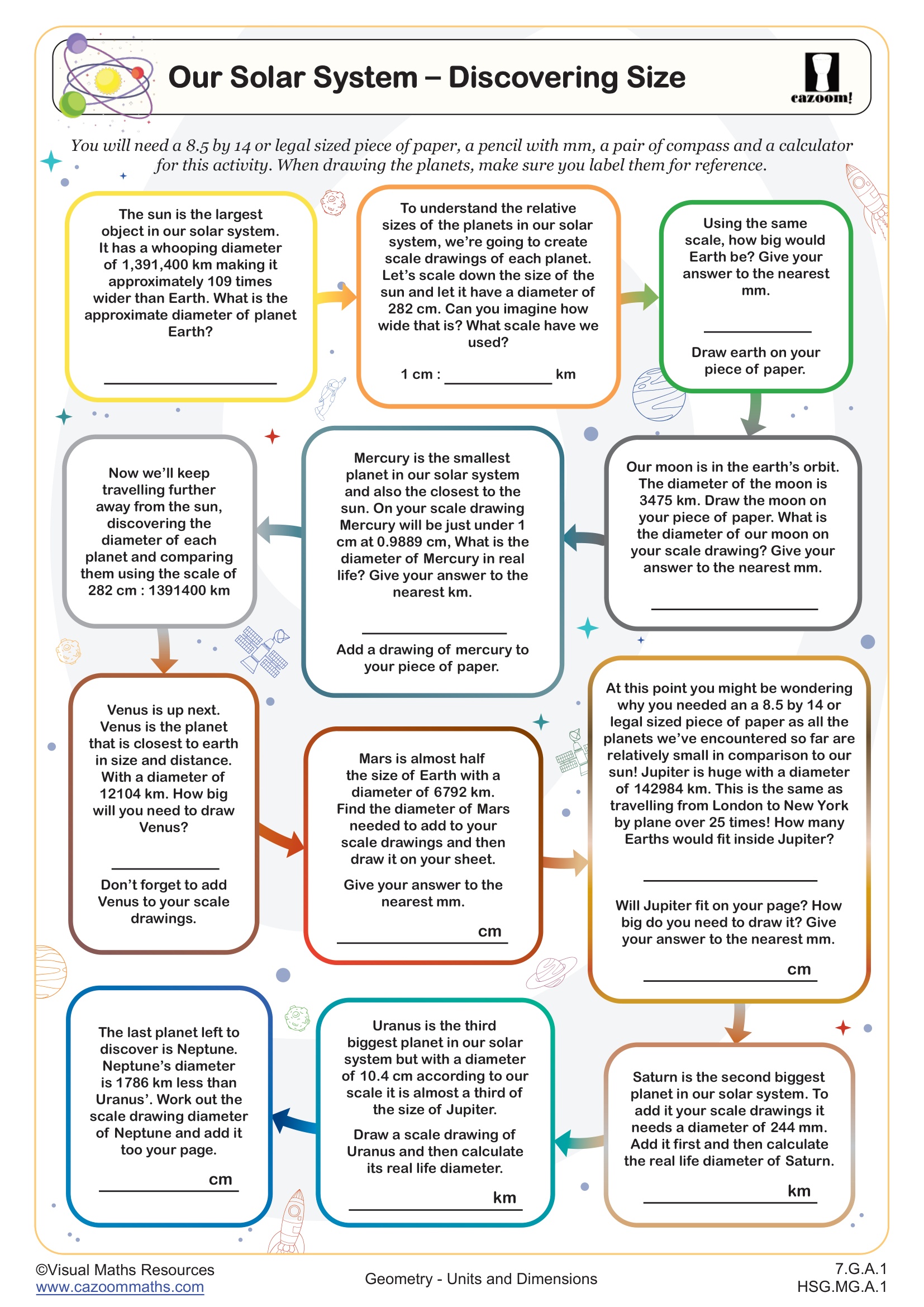
Matching Formulas for Area and Volume
Grades: 8th Grade, Geometry
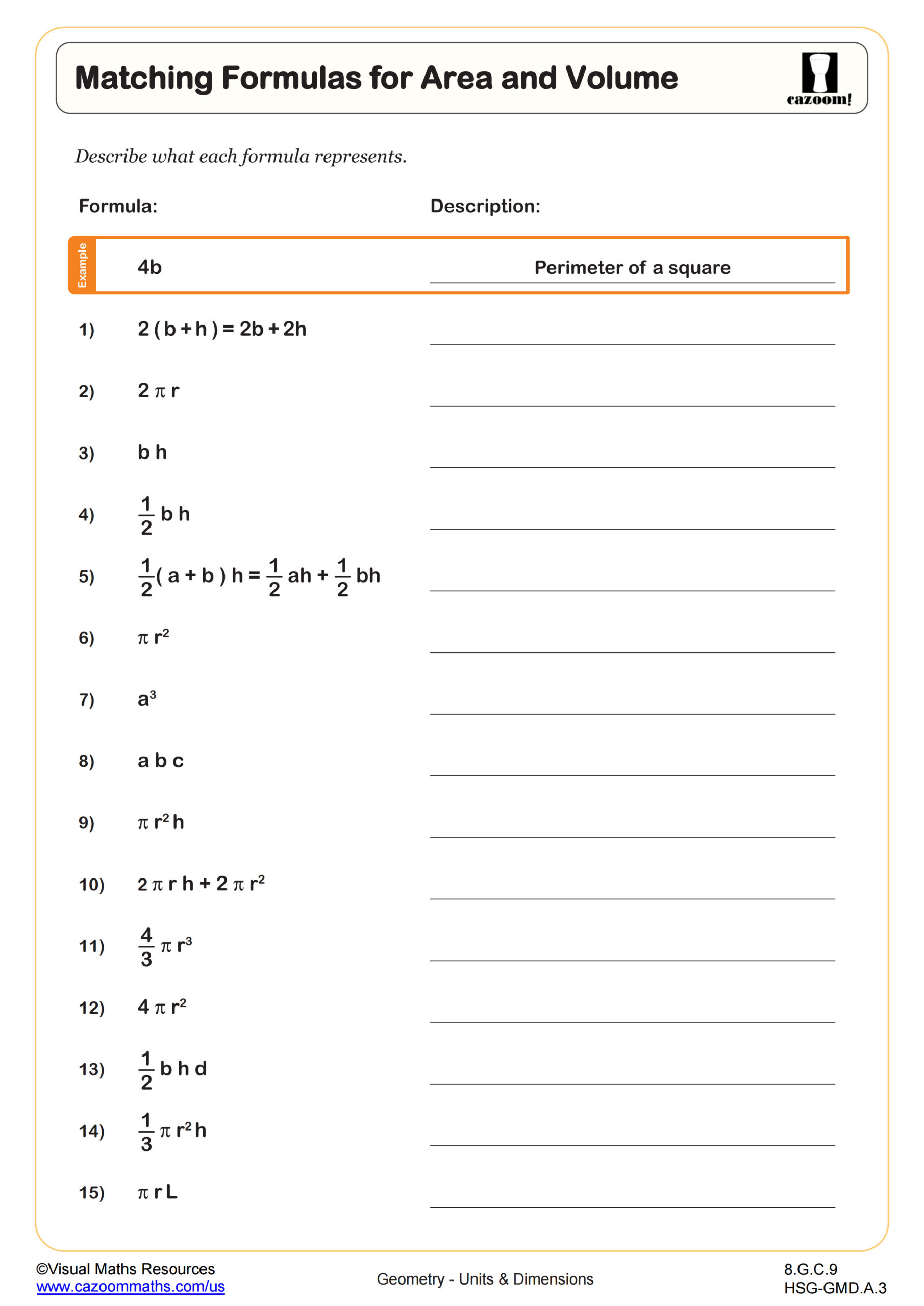
Matching Formulas for Perimeter and Area
Grades: 8th Grade
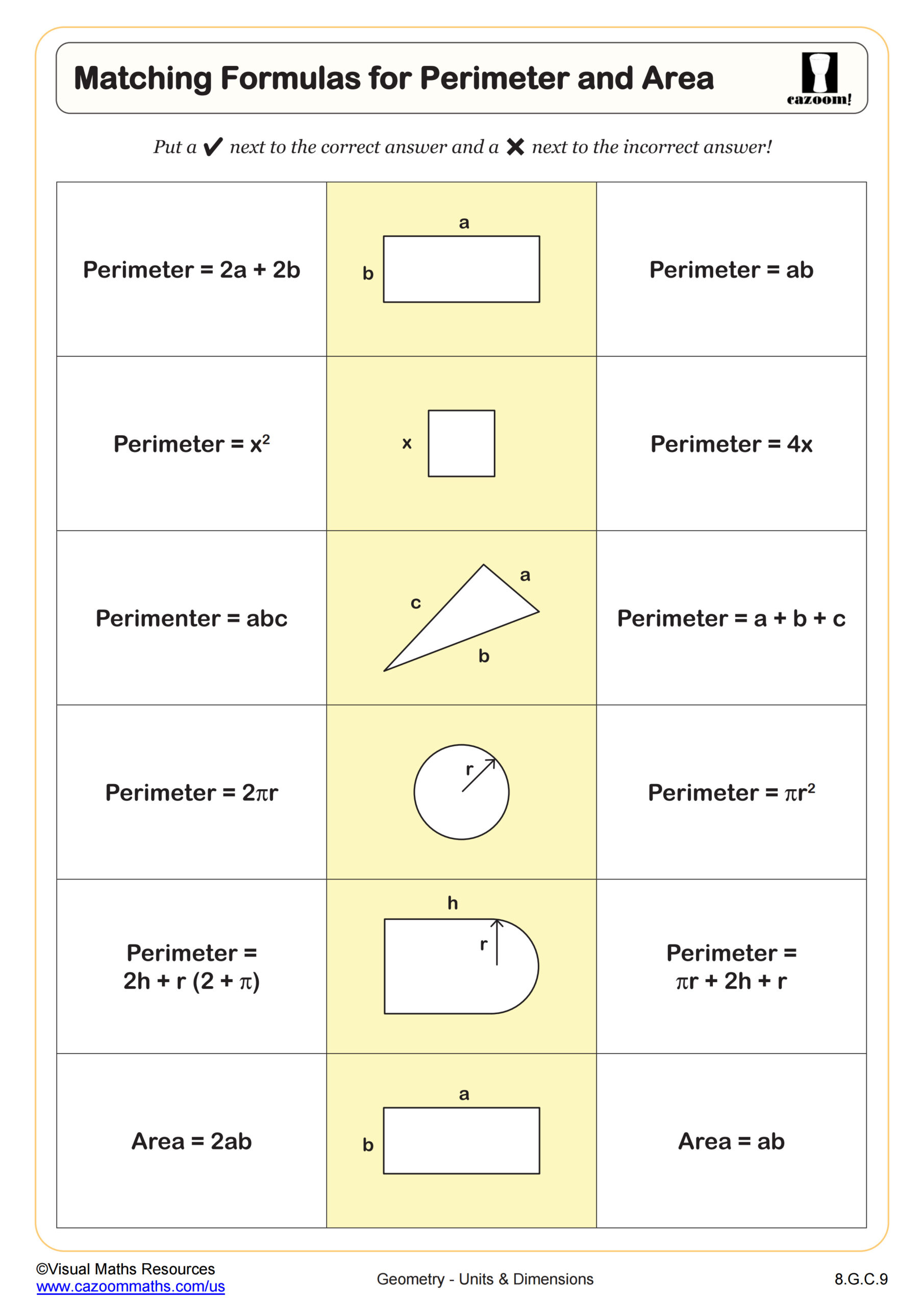
Dimensional Analysis
Grades: Geometry, Algebra II
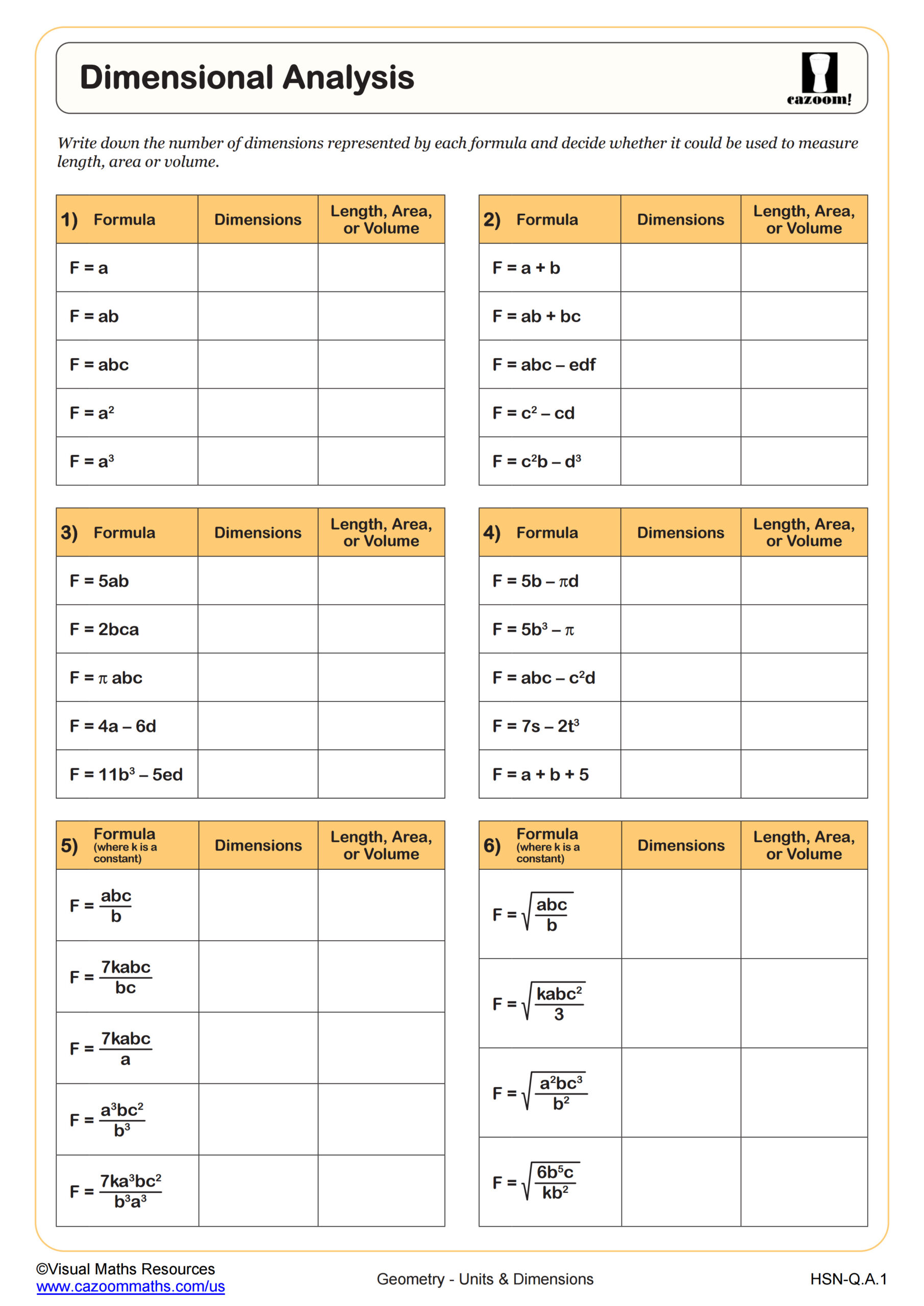
Elliptical Orbits
Grades: Geometry, IM 2
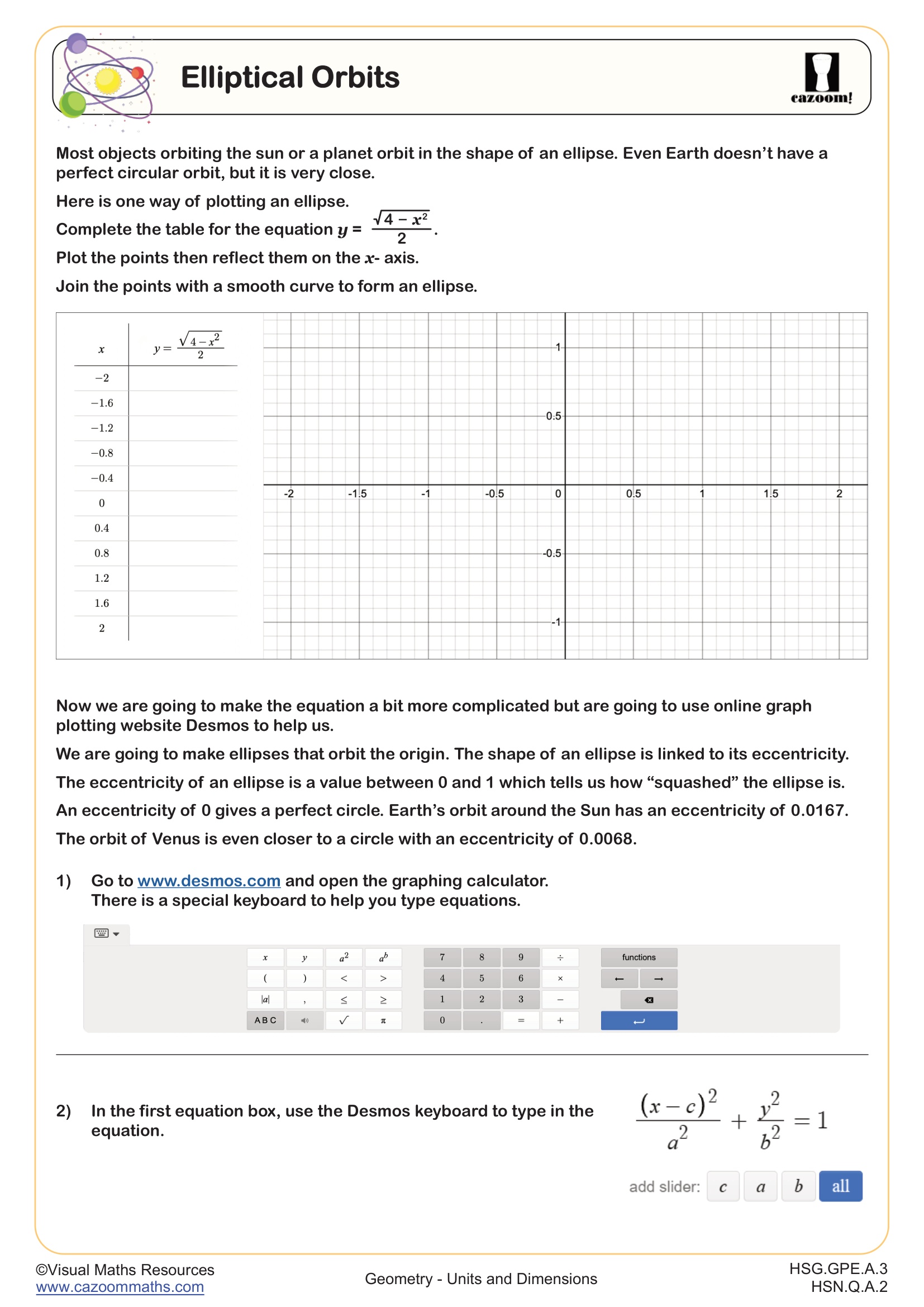
Our Solar System- Discovering Size and Distance
Grades: Geometry, IM 2
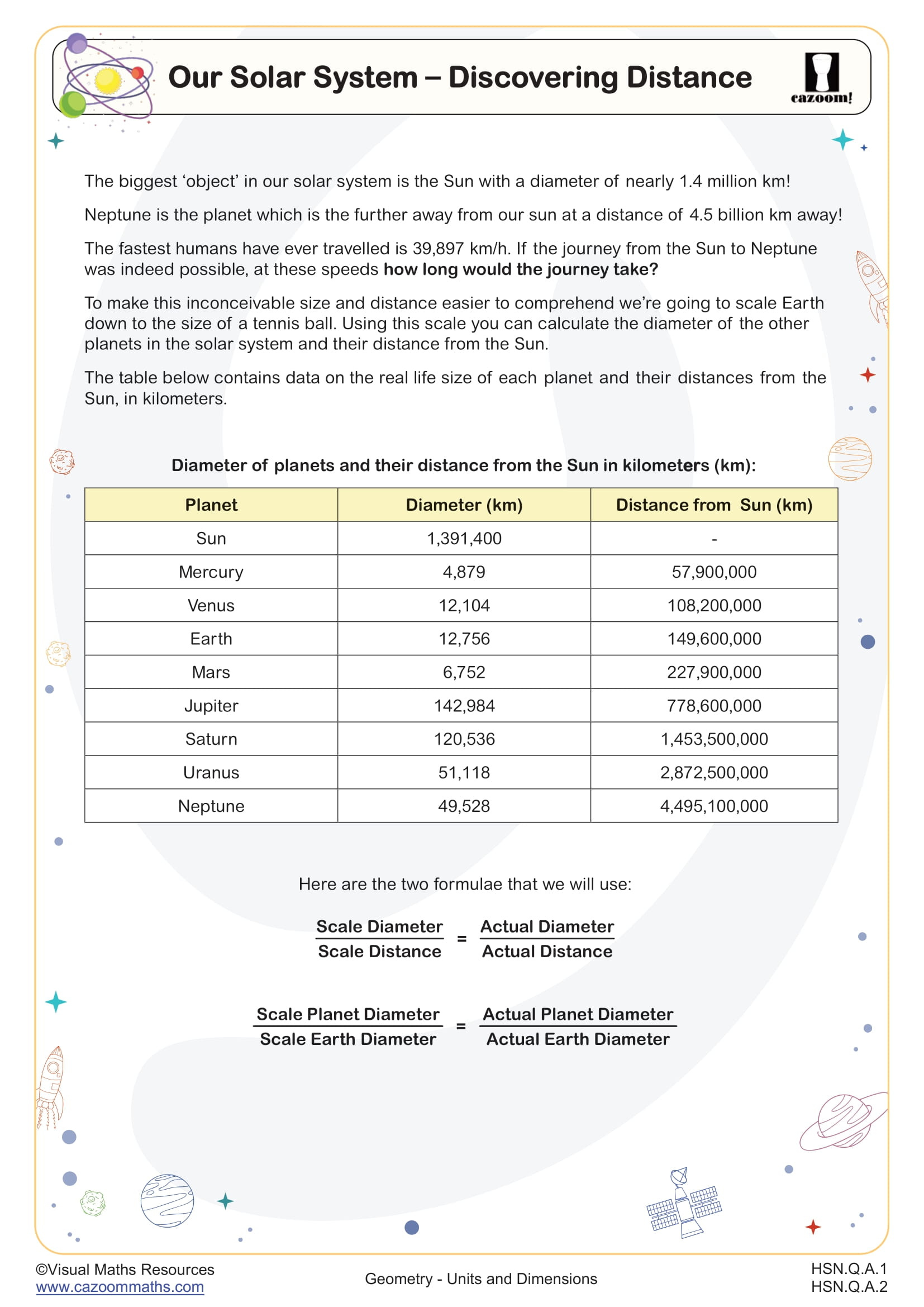
Printable PDF Units and Dimensions Worksheets with Answers
Download our printable PDF units and dimensions resources to give students the push they need when learning different concepts of geometric as well as algebraic equations. Our math experts have specifically curated these resources in a way that your children can master the worksheet using simple sums with clear and easy-to-understand instructions. Hence, our units and dimensions resources are great for building a sense of geometry and early problem-solving skills.
What Are Units and Dimensions in Math?
Units and dimensions in math refer to how we measure things like length, weight, volume, and time. Common units include centimeters, meters, inches, pounds, liters, and hours. Students learn which unit to use for different types of measurement, how to convert between units, and how to choose the correct tools for measuring. Understanding units helps students solve real-world problems and builds foundational math skills.
CCSS-Aligned Units and Dimensions Questions
Our worksheets include Common Core-aligned measurement questions that help students build skills across multiple grade levels. These include reading scales, converting between metric and US customary units, and solving multi-step word problems involving measurements. By practicing regularly, students gain confidence and accuracy in using measurement in a variety of math tasks. These questions are designed to prepare students for classroom assessments and everyday reasoning.
Real-Life Uses of Units and Dimensions
Units and dimensions are used every day. Students measure ingredients for a recipe, weigh items at the grocery store, or check how long something takes. Knowing the right unit to use—and how to convert between units—is essential in science, health, and everyday tasks. Our worksheets use real-life examples to help children understand why units matter and how to use them confidently outside of math class.
Prerequisite Knowledge Before Learning Units and Dimensions
Before working with units and dimensions, students should understand:
• Basic addition and subtraction
• Number comparison (greater than, less than)
• Counting and grouping items
• Familiarity with time, length, and weight vocabulary
Our worksheets gradually introduce more complex ideas while reinforcing these core skills. This helps learners build a solid understanding of measurement at their own pace.